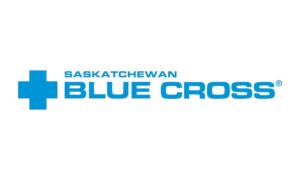Without proper compensation, ILS investors will look elsewhere: Fitch

If they aren’t properly compensated for taking catastrophe losses, investors in catastrophe bonds and other insurance-linked securities (ILS) are likely to look elsewhere for returns, Fitch Ratings has warned.
Echoing sentiment of many of the investors we’ve spoken with in the last few weeks, Fitch suggests rates need to rise significantly to ensure cat bond and ILS investors are earning sufficient returns to compensate them for taking the level of losses experienced in the last five years or so.
“Cat bonds become unattractive if investors perceive they are not adequately compensated for “loss creep” and “trapped capital” due to settlement delays, which can last three to four years,” the rating agency says.
Adding, “During this time, Cat bond investors may forego investment opportunities from other asset classes or be stuck with ILS deals at lower spreads.”
Of course, it’s not just the loss creep and risk of capital being trapped some investors are calling for rates to be hiked to cover, it’s simply the level and frequency of loss-attaching catastrophe events, while the structural and social inflationary aspects are of course important to price for.
If cat bond and ILS rates and pricing don’t rise adequately to deliver the returns investors are seeking, there would be a knock-on effect to insurance and reinsurance firms, in there being less risk capital available for their reinsurance and retrocession needs.
“ILS investors not properly compensated for risk or facing elevated losses amid fallout from Hurricane Ian may choose to reinvest capital elsewhere,” Fitch cautions. Saying this would, “Exacerbate the demand/supply imbalance of the reinsurance sector, which is especially acute in the Florida property market.”
Fitch points out that there had been discussion of a pipeline of new catastrophe bonds that could total $5 billion for the rest of this year and early 2023.
There is now considerably uncertainty over satisfying all this sponsor demand, which as we’ve explained makes matching the pipeline to capital flows absolutely vital through the rest of this year, especially as scheduled cat bond maturities are relatively low.
Fitch has also updated its estimate of insurance and reinsurance market losses from hurricane Ian, with a range of $35 billion to $55 billion now opted for, up from its just after the event estimate of up to $40 billion.
Fitch notes the broad cat bond market exposure to hurricane Ian, with around $10 billion of outstanding cat bonds having some exposure to US wind, while those predominantly exposed to Florida or southeast US wind total around $2.9 billion.
As we reported earlier today, Lane Financial’s analysis suggests around $1.9 billion of cat bond market loss from hurricane Ian is implied by secondary pricing sheets.
Our own analysis from October 4th stated that pricing sheets and cat bond models implied a market loss of $1.6 billion to $3.6 billion from hurricane Ian.
However, Fitch also notes that cat bond returns are outpacing some financial market benchmarks in 2022 even with hurricane Ian losses priced in, as the effects of macroeconomic volatility show in broader markets and ILS’ lack of correlation continues to prove a selling point.
While cat bonds have underperformed the same benchmarks over a five-year basis, if cat bond pricing rises as much as some forecasts suggest, that could take cat bond returns back to far more attractive levels in the years ahead.
Of course, that’s no guarantee of investor support being there and right now that is the critical question. As sponsors and cedents need reinsurance capital and that is presenting an opportunity to the cat bond market, as long as some new investor flows can be added to support this potential deal-flow.
The market has to demonstrate it is effectively pricing for the volatility and losses experienced by those assuming global catastrophe risks, to make the asset class appealing to deploy capital into over the longer-term.
The coming price increases may be sufficient to make the asset class far more attractive again, but what will be critical is making them sticky, so capital is adequately compensated and feels confident that compensation is appropriate and there for the long-term.




